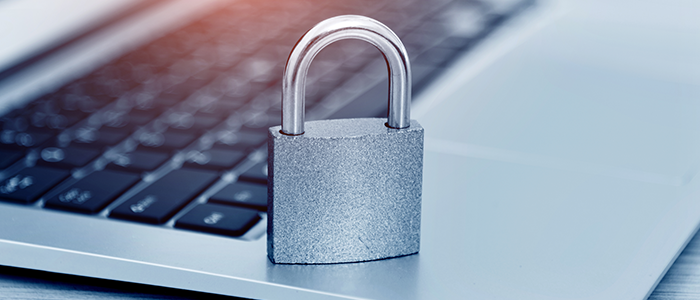What is Endpoint Security Management?
Endpoint Security protects the data and software stored in endpoints from cyber threats. An endpoint is a device connected to a network that acts as a point of access for users and applications. Endpoint devices include desktops, laptops, mobile devices, and servers connected to a network.

Endpoint management is the system of protecting and managing the endpoint devices connected to a network. The primary purpose is to prevent unauthorized access, data breaches, and security threats posed by cyber-attacks that may originate from endpoint devices.
Protecting an organization from cyber threats requires robust systems that secure endpoints against attacks from hackers, organized criminal groups, and malware such as ransomware. These systems also manage Internet of Things (IoT) devices, including cameras, smart printers, and sensors, as well as Point of Sale (POS) systems like ATMs.
How does Endpoint Security Management work?
Table of Contents
Endpoint security management monitors, controls, and protects the endpoints and software and data stored in them. It works by the following key features:
- Endpoint security management continuously monitors all endpoint activities to identify, and respond to potential threats, and minimize damage.
- It ensures security by using a data encryption policy to protect sensitive data stored on endpoints.
- To enhance protection, the software and operating systems are kept updated with the latest security patches.
- Endpoint Protection Platforms (EPP) provide security features, like antivirus, anti-malware, firewall capabilities, and intrusion prevention systems.
- Endpoint security imposes a strict access policy, allowing only authorized users to access sensitive data.
- It also automates responses and security alarms in case of a cyber-attack.
By implementing these measures, endpoint security management aims to establish a strong defense against a growing number of cyber threats.
Importance of Endpoint Security Management
There is a growing demand for endpoint security these days. The increased use of technology has expanded cyber threats, highlighting the need to secure data stored in endpoints.
1) Data Protection
Many types of sensitive information such as personal data, financial records, and business information are saved in endpoints. If a device gets attacked, it may lead to data breaches, causing financial losses, reputational damage, and legal consequences for organizations. Thus, an effective security management system is crucial for protecting this data.
2) Primary Defense
Endpoint security is generally considered the primary defense in an organization’s cybersecurity management. Organizations can reduce the potential risks of data loss by securing endpoints. It also uses advanced measures for network security.
3) Endpoints Weakness
Every endpoint acts as a potential entry point for attackers. With the advancement of remote work and BYOD (Bring Your Device) policies, the ratio of endpoints has also increased. This provides a significant attack surface for attackers. Therefore, every device that accesses the commercial network must be secured to prevent unauthorized intrusions.
4) Regulatory Compliance
Various industries must follow security standards and regulations to protect sensitive data. Endpoint security management assists organizations in implementing these regulations by applying security policies across all endpoints. This compliance helps to avoid the consequences associated with data breaches.
5) Reduction of Threats
Endpoint security systems detect both intentional and unintentional insider risks. Organizations can reduce the risk of insider threats by implementing security policies and controls to protect sensitive information.
Key Components of Endpoint Protection
Antivirus and Anti-Malware
Endpoint security uses antivirus, anti-malware, and firewall systems to detect and remove malicious software from devices to protect sensitive data.
Data Encryption
Encrypting data stored on endpoints protects data if a device is lost or stolen. This ensures that the data remains inaccessible to anyone who does not have the correct decryption key.
Access Control
The endpoint security system implements strict access controlling measures that allow only authorized users to access sensitive data. This includes multi-factor authentication (MFA) and role-based access control systems.
Endpoint Protection Platforms (EPP)
Endpoint Protection Platforms (EPP) are security platforms designed to protect endpoints from several types of cyber threats. These platforms commonly provide a broad range of features, such as antivirus, anti-malware, firewall protection, application control, and intrusion prevention.
Moreover, EPP frequently utilizes advanced techniques to detect and respond to threats in real-time. Hence, it helps to secure data stored in endpoints from cyber-attacks and preserve the confidentiality and integrity of sensitive data.
Endpoint Detection and Response (EDR)
Endpoint Detection and Response (EDR) is a cybersecurity technology that detects, investigates, and responds to advanced threats on endpoints. EDR solutions monitor these endpoint activities continuously and efficiently to detect and respond to suspicious activity.
Therefore, EDR is helpful for organizations aiming to protect their endpoints from advanced cyber threats.
Data Loss Prevention (DLP)
Endpoint security management uses a Data Loss Prevention (DLP) system for securing data in endpoint devices. This system prevents the inappropriate use, transfer, or sharing of sensitive data. Therefore, it helps to improve the data protection system of an organization and prevents data loss by restricting unnecessary data sharing.
Patch Management
It is important to keep the software and operating systems up-to-date to avoid vulnerabilities. Patch management refers to a system that monitors and applies updates to software applications and operating systems across all endpoints.
Mobile Device Management (MDM)
Mobile Device Management (MDM) solutions provide security measures of data protection for organizations that encourage mobile devices. These measures include device tracking, remote data erasing, and other security policies.
Security Awareness Training
It is necessary to train the employees to recognize cyber threats for data protection at endpoints.
Advanced features of the Endpoint Security Management System
An endpoint security management system is advantageous for data protection in several ways.
- Provides latest security updates
- Minimize possible security threats
- Faster response to cyber-attacks
- Advanced data encryption policies
- Improves an organization’s security posture
- Implements strict data access policies
- Security alarm system in case of cyber-attacks
- Cost effective
Configures Wi-Fi and VPN (Virtual Private Network)
How does Endpoint Security differ from Traditional Antivirus?
Endpoint security differs from traditional antivirus in several ways some of which are summarized in the table below:
| # | Endpoint Security. | Traditional Antivirus. |
| Protection Scope | Broad protection, including antivirus, anti-malware, firewall protection, application control, and intrusion prevention. | Detects and removes known malware. |
| Threat Response | Proactive, uses machine learning and analytics to detect threats in real-time. | Reactive, depends on updates for new threats. |
| Management | Centralized management control. | Managed on a per-device basis. |
| Integration | Collaborates with other security tools. | Generally independent. |
Challenges in Endpoint Security Management
a) Number of Devices
Each device represents an endpoint. Therefore, an increase in the number of devices in an organization complicates the security measures.
b) Modern Threats
As cyber threats are evolving rapidly, organizations must stay updated on the latest cyber threats.
c) Security and Utility
Organizations may face a hindrance in daily work if they impose highly restrictive measures of security. Therefore, a balance must be maintained between implementing security measures and maintaining user productivity.
Future Trends in Endpoint Security Management
The need for endpoint and data protection has risen with the advancement of technology. Hence, endpoint security management provides the best security platform for the future. Some of the future trends are:
- There is an increased demand for artificial intelligence (AI) and machine learning (ML) for enhancing security systems.
- The Zero Trust Security model is gaining attention which means that no one (inside or outside the network) can be trusted by default.
- The Extended Detection and Response (XDR) system facilitates organizations to detect and respond to cyber threats at endpoints and network servers more efficiently.
- Due to the high demand for hybrid work models, endpoint security management systems aim to protect remote devices from potential threats.
Endpoint Security Management is a crucial threat prevention system for organizations. By implementing endpoint security measures, organizations can protect their sensitive data from cyber threats. It also helps to maintain regulatory compliance, reduce insider threats, and is considered a first line of defense for data protection.
Endpoint security management provides a broad range of protection, including antivirus, anti-malware, and firewall protection. It also offers application control and intrusion prevention. These measures have become necessary for organizations to safeguard their data and devices from cyber-attacks.





